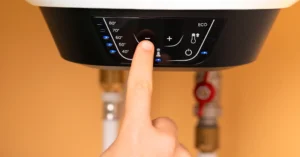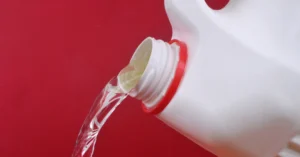Your home’s sewer line represents one of its most critical yet overlooked systems. Hidden underground and functioning silently when working properly, this essential component only draws attention when problems arise—often resulting in significant expense, property disruption, and inconvenience. In San Diego’s unique environment, sewer lines face distinctive challenges that require specialized approaches to maximize their lifespan.
At Solid Plumbing & Drain Inc., we’ve spent 20 years helping homeowners throughout San Diego County protect and extend the life of their sewer systems. We’ve witnessed firsthand how proactive maintenance and informed homeowner practices can add decades to a sewer line’s functional lifespan, saving thousands in premature replacement costs.
In this comprehensive guide, you’ll discover the most effective strategies for extending your San Diego home’s sewer line life. These proven approaches address our region’s unique challenges—from invasive root systems to clay soil conditions—and provide practical steps you can take to protect this valuable infrastructure investment.
Understanding San Diego’s Unique Sewer Line Challenges
Before diving into specific preservation strategies, it’s important to understand why San Diego properties face distinctive sewer challenges compared to homes in other regions.
Soil Conditions and Their Impact
San Diego County’s varied soil types create specific challenges for sewer systems:
– Clay soil predominance in many neighborhoods causes expansion and contraction with moisture changes, stressing pipes
– Coastal sandy soils provide less stable support, potentially allowing pipe movement
– Rocky soil in eastern areas can damage pipes through direct contact and pressure points
– Soil pH variations across the county affect different pipe materials differently
– Drought-related soil shrinkage creates voids around pipes, removing crucial support
– Occasional heavy rains cause soil shifting that can misalign or stress sewer lines
Communities with particularly challenging soil conditions, such as the clay-heavy soils in Clairemont, Kensington, and parts of La Jolla, experience accelerated sewer line degradation compared to areas with more stable soil profiles.
Vegetation and Root Intrusion
San Diego’s plant life creates specific threats to sewer integrity:
– Drought-resistant trees and shrubs develop particularly aggressive, water-seeking root systems
– Year-round growing conditions allow continuous root development and intrusion
– Native species like California pepper trees, eucalyptus, and certain palms have especially invasive roots
– Irrigation practices often concentrate water near sewer paths, encouraging root growth
– Drought conditions drive roots to seek reliable water sources like sewer lines
– Landscaping choices made without consideration of underground utilities create preventable conflicts
Root intrusion represents the single most common cause of sewer line failure in established San Diego neighborhoods, particularly in areas with mature landscaping and older sewer systems.
Age and Material Factors
San Diego’s development history has created a diverse sewer infrastructure landscape:
– Pre-1950s homes often have clay or Orangeburg pipe with limited remaining lifespan
– 1950s-1970s construction frequently used concrete pipe vulnerable to chemical degradation
– Early plastic pipes (1970s-1980s) may have manufacturing defects causing premature failure
– Homes with multiple renovations often have mixed materials creating transition point vulnerabilities
– Older neighborhoods may have undersized lines by modern standards
– Historic districts face unique challenges balancing preservation with infrastructure needs
These age and material factors significantly influence which preservation strategies will be most effective for different San Diego properties.
Essential Strategy #1: Implement Regular Professional Inspections
The foundation of effective sewer line preservation is regular professional inspection using specialized camera equipment.
The Value of Video Inspection Technology
Modern inspection technology provides critical insights:
– Identifies developing issues before they become emergencies
– Creates visual documentation of pipe condition for tracking changes over time
– Precisely locates problem areas for targeted maintenance
– Reveals minor defects that can be addressed before becoming major failures
– Provides peace of mind regarding system condition
– Establishes baseline condition for future comparison
These inspections serve as an early warning system, allowing for planned maintenance rather than emergency response.
Recommended Inspection Schedule
Based on our experience with thousands of San Diego homes, we recommend the following inspection intervals:
– Homes over 40 years old: Every 18-24 months
– Homes 20-40 years old: Every 2-3 years
– Homes under 20 years old: Every 3-5 years
– Properties with previous sewer issues: Annually regardless of age
– Homes with mature trees near sewer lines: Every 12-18 months
– Before purchasing any home: Always inspect regardless of age
These intervals should be adjusted based on specific property conditions and previous findings.
What Professional Inspectors Look For
Trained technicians focus on specific warning signs:
– Root intrusion at joints or small cracks
– Pipe sagging or misalignment
– Scale buildup reducing flow capacity
– Cracks or fractures in pipe walls
– Corrosion in metal components
– Offset or separated joints
– Debris buildup creating flow restrictions
– Evidence of previous repairs or patches
– Improper slope affecting waste movement
– Connections from unauthorized sources
Identifying these issues early allows for targeted intervention before complete failure occurs.
Essential Strategy #2: Implement Proactive Root Management
In San Diego’s climate, aggressive root management is perhaps the most important preventative measure for sewer protection.
Understanding Root Behavior in Southern California
Root intrusion in San Diego follows patterns influenced by our unique environment:
– Roots enter through small joints or minor cracks, then expand as they grow
– Growth accelerates during winter and spring months when moisture is more available
– Even drought-tolerant plants aggressively seek sewer moisture during dry periods
– Roots can travel surprising distances to reach consistent water sources
– Certain species (ficus, pepper trees, eucalyptus, willows) are particularly problematic
– Root systems continue growing and expanding throughout the year in our mild climate
This persistent root pressure requires systematic management rather than one-time solutions.
Professional Root Maintenance Options
Several professional approaches effectively manage root intrusion:
– Mechanical cutting: Specialized cutting tools physically remove roots from the pipe interior
– Hydro-jetting: High-pressure water removes roots and cleans pipe walls
– Chemical treatments: Copper sulfate or specialized foaming agents kill roots without harming plants
– Barrier installation: Physical barriers installed around pipes in high-risk areas
– Pipe lining: Creating a seamless interior pipe surface that prevents root penetration
For most San Diego homes with mature landscaping, we recommend a combination approach: annual mechanical cleaning followed by targeted chemical treatment to slow regrowth.
Homeowner Root Management Strategies
Several practices help minimize root-related sewer damage:
– Identify your sewer line path and avoid planting trees or large shrubs within 10 feet
– Consider removing particularly problematic existing trees near sewer lines
– Install root barriers when keeping trees near sewer lines is unavoidable
– Choose less aggressive species when planting near utility lines
– Direct irrigation away from areas above sewer paths
– Consider hardscaping directly above sewer paths
– Monitor for unusual landscape growth that may indicate leaks
These preventative approaches are particularly important in newer San Diego developments where trees are still maturing and future root problems can be avoided.
Essential Strategy #3: Practice Proper Disposal Habits
What enters your sewer system significantly impacts its longevity, with certain items causing particular problems in San Diego’s conditions.
Kitchen Disposal Guidelines
The kitchen represents a primary source of problematic sewer debris:
– Never dispose of cooking oils or grease down drains (they solidify in pipes, particularly in cooler coastal areas)
– Avoid putting fibrous vegetables through garbage disposals (artichoke leaves, celery, corn husks)
– Limit coffee grounds in drains (they accumulate and don’t break down)
– Dispose of rice and pasta in trash (they expand and create blockages)
– Use sink strainers to catch food particles
– Run cold water before, during, and after disposal use
These practices prevent the formation of grease dams and food waste accumulation that commonly contribute to San Diego sewer blockages.
Bathroom Disposal Guidelines
Bathroom habits significantly impact sewer health:
– Flush only human waste and toilet paper (nothing else is designed to break down properly)
– Never flush “flushable” wipes (they don’t break down in our water-conserving systems)
– Dispose of feminine hygiene products in trash receptacles
– Install hair catchers in all shower and tub drains
– Avoid disposing of dental floss, cotton swabs, or similar items in toilets
– Consider toilet paper that breaks down easily, particularly in older systems
These practices prevent the accumulation of non-degradable materials that commonly cause blockages in San Diego’s water-efficient sewer systems.
Chemical Usage Considerations
Certain chemicals can damage sewer pipes when used improperly:
– Limit use of chemical drain cleaners (particularly damaging to older pipes)
– Never pour paint or solvents down drains
– Use enzyme-based cleaners instead of caustic chemicals
– Avoid excessive bleach which can degrade certain pipe materials
– Consider bio-friendly cleaning products that break down more completely
– Dilute swimming pool chemicals before disposal per local regulations
These precautions are particularly important in San Diego’s older neighborhoods where aging pipes are more vulnerable to chemical damage.
Essential Strategy #4: Address Minor Issues Before They Escalate
Prompt attention to early warning signs prevents major failures.
Recognizing Warning Signs
Several indicators suggest developing sewer problems:
– Slow drains throughout the house (not just isolated fixtures)
– Gurgling sounds from drains when toilets flush
– Sewage odors in yard or home
– Unusually lush or green patches of grass along sewer line path
– Water backing up in fixtures during appliance use
– Indentations or settling in yard above sewer line
– Recurring clogs despite clearing efforts
– Bubbling in toilet when sink is used
– Foundation cracks or settling near sewer path
– Rodent or insect activity concentrated in one area
Recognizing these signs early allows for targeted intervention before complete failure occurs.
Appropriate Responses to Minor Issues
When warning signs appear, these responses help prevent escalation:
– Schedule professional inspection to assess the specific issue
– Have minor clogs professionally cleared rather than using chemicals
– Repair small leaks immediately before they undermine surrounding soil
– Address joint separations before they become complete disconnections
– Treat root intrusions before they completely block flow
– Correct improper slope issues before they cause waste accumulation
– Repair or replace damaged cleanout caps promptly
These timely interventions typically cost hundreds rather than the thousands required for emergency repairs or replacements.
The False Economy of Delayed Maintenance
Understanding the financial impact of postponed maintenance:
– Minor root clearing: $150-350 vs. complete blockage emergency service: $500-1,200
– Joint repair: $400-800 vs. extensive excavation and replacement: $3,000-10,000+
– Spot pipe repair: $800-2,000 vs. complete line replacement: $5,000-25,000
– Preventative cleaning: $250-450 vs. emergency weekend service: $600-1,500
– Camera inspection: $250-350 vs. emergency location services: $500-800
– Planned repair scheduling vs. emergency service premiums and property damage
This cost differential makes preventative maintenance one of the most financially sound investments in home care, particularly for San Diego’s aging housing stock.
Essential Strategy #5: Consider Protective Upgrades and Improvements
Several modern technologies can significantly extend sewer line lifespan.
Pipe Lining and Rehabilitation
Trenchless technologies offer powerful preservation options:
– Cured-in-place pipe lining: Creates a new pipe within the existing one without excavation
– Pipe bursting: Replaces damaged pipe while minimizing surface disruption
– Spot repairs: Address isolated damage without complete replacement
– Joint sealing: Specifically targets connection points where most leaks begin
– Epoxy coating: Provides internal protection against corrosion and root intrusion
– Slip lining: Inserts smaller pipe inside damaged larger pipe to restore function
These approaches are particularly valuable in San Diego’s established neighborhoods with mature landscaping, hardscaping, or other surface features that would be costly to disturb.
Cleanout Installation and Upgrades
Proper access points dramatically improve maintenance capability:
– Strategic cleanout placement: Provides direct access to key system points
– Two-way cleanouts: Allow maintenance from multiple directions
– Above-ground access: Eliminates excavation for routine maintenance
– Proper sizing: Ensures equipment can effectively reach problem areas
– Durable materials: Prevent damage from landscaping equipment or foot traffic
– Clear marking: Ensures accessibility when needed
Adding properly placed cleanouts represents one of the most cost-effective investments in long-term sewer maintenance capability.
Backwater Prevention Devices
Protection against municipal system backups:
– Backwater valves: Prevent sewage from flowing back into your home
– Check valves: Allow flow in one direction only
– Overflow protection systems: Provide alternative paths during blockages
– Alarm systems: Alert homeowners to developing backup conditions
– Automatic shutoff systems: Prevent water usage during blockage conditions
– Ejector pumps: Provide function even during main line issues
These devices are particularly valuable in low-lying areas of San Diego like Mission Valley, parts of Pacific Beach, and other locations where municipal system overloads can affect residential properties.
Essential Strategy #6: Implement Smart Water Management
Water usage patterns significantly impact sewer system longevity.
Flow Management Practices
Strategic water usage helps maintain sewer health:
– Distribute water usage throughout the day rather than concentrated periods
– Run full loads in washing machines and dishwashers
– Avoid simultaneous use of multiple high-volume fixtures
– Maintain consistent flow to prevent debris accumulation
– Consider flow management devices that regulate usage patterns
– Install high-efficiency fixtures that optimize water volume for waste movement
These practices are particularly important in San Diego’s water-conscious environment where conservation efforts can inadvertently impact sewer function.
Pressure Management
- Check pressure seasonally as municipal levels can fluctuate
- Use expansion tanks with water heaters to absorb pressure changes
- Avoid pressure spikes from simultaneous high-flow appliance use
- Ensure all fixtures are compatible with household pressure
- Monitor for signs of pressure irregularities (noisy pipes, sudden bursts, leaking valves)
Proper pressure regulation reduces wear on your sewer system and complements other preservation strategies.
Protect Your Sewer Line, Protect Your Home
Your sewer system isn’t just buried pipe—it’s the backbone of your home’s hygiene and functionality. In San Diego’s shifting soil, root-prone landscapes, and aging infrastructure, proactive sewer maintenance is not optional—it’s essential.
At Solid Plumbing & Drains Inc., we help San Diego homeowners avoid disaster through smart planning, routine inspection, and modern trenchless technology. Whether you’re protecting a vintage bungalow in North Park or managing new construction in Otay Mesa, our team delivers long-term solutions tailored to your home and soil.
Call today to schedule a sewer line inspection or maintenance service




